After ten years of discussion, the EU's unified charging interface finally ushered in the final chapter. On June 7, Brussels local time, the European Parliament and the European Council agreed that all mobile electronic products sold in the EU must use the USB type-C interface as the universal charging port after the autumn of 2024.
The European Commission said, "this is an attempt to reduce e-waste and facilitate consumers." According to their estimates, this will save consumers in Europe more than 250million euros a year and reduce 11000 tons of e-waste every year.
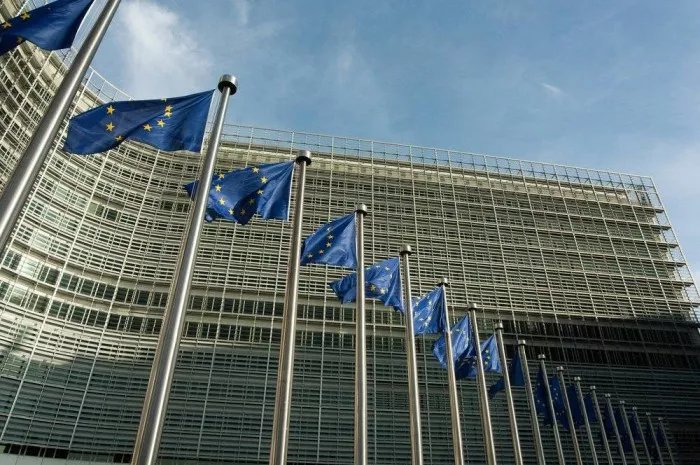
For Android manufacturers who have already completed the popularization of type-C, this regulation is irrelevant, but Apple will have to cancel the lightning interface that has been used for the past decade in Europe.
Apple has repeatedly protested against the implementation of this regulation. "We are still worried that allowing only one type of charger will stifle innovation, rather than encourage innovation, which in turn will harm the interests of consumers in Europe and around the world."
There is a very strange logic in this: on the iphone When the 12 series cancelled the charging head, apple explained that it was beneficial to environmental protection. However, when the European Union proposed to unify the charging port for environmental protection, apple thought that this hindered innovation
Even if this problem is explained according to Apple's logic, there has been no innovation in our lightning interface in the past decade. In the final analysis, when it comes to the charging port, I'm afraid apple is thinking about environmental protection and business.
Business behind lighting
The performance of USB type-C and lighting is almost an uncontested topic.
In 2012, when lightning came out, this interface that can realize positive and negative blind plug is still relatively advanced, but its problem is that the upgrade potential is very limited. In contrast, the USB type-C launched two years later has supported 40gbbps transmission rate after multiple generations of upgrading of the USB 3.1-usb 4.0 standard. After the USB PD 3.1 fast charging protocol came into effect, its maximum charging power has also been upgraded from the previous 100W to 240W.
Does apple not understand the technical advantages of USB type-C? They know too well.
"We are for ipad The air brings a much anticipated feature 'USB type-C', which can increase the data transmission speed to 5 gigabits per second, ten times faster than the previous generation of air. " This is Apple's explanation of the type-C interface at the iPad air4 conference.
But for apple, knowing the gap does not mean that it must be improved, because the lighting interface is associated with Apple's multi billion dollar MFI project.
Mfi(Made for iPhone/iPod /IPad) is Apple's third-party Accessory The manufacturer's authorization project, which has been implemented since the iPhone 5 era. A chip is built into the lightning data line to identify. If a third-party data line that has not passed MFI certification is used, a warning prompt will pop up after the phone is connected, indicating that the accessory is incompatible with the phone.
Through this project, Apple has almost realized the "indiscriminate harvest" of third-party accessory factories.
Unlike the "Apple tax" directly drawn by the app store from developers, apple collects more "cost fees" from manufacturers applying for MFI certification. For example, according to the report of the daily economic news, Apple will charge more than $2000 certification fees from manufacturers applying for MFI certification. If the certification fails, the fees will not be refunded, and the manufacturers have to apply for certification again.
Of course, compared with the previous one-time costs, the real cost is the lightning chip. Apple stipulates that this chip must be purchased from the designated it component dealer anfuli. The purchase price of each chip is $2.1, which has exceeded the wire cost of the data line itself. In addition to additional costs such as tariffs and labor, the cost of each authorized lightning data line is 20 yuan higher than that of the ordinary data line.
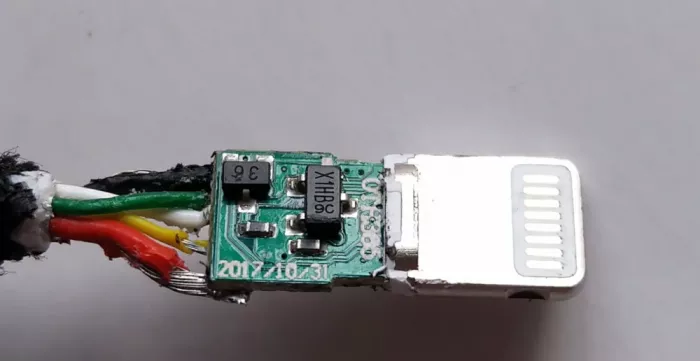
It is worth mentioning that after Apple switched to C52 chip, the cost of accessories decreased slightly, and the single cost of the first generation C10 chip was as high as $2.98.
Since Apple has never announced the revenue of MFI project, and the third-party supporting manufacturers are mixed, it is difficult to directly estimate how much profit MFI has contributed to apple. However, from the growth rate of domestic third-party manufacturers in the global market in the past two years, the scale of this market can not be underestimated.
For example, when the iPhone 12 was released, apple changed the USB a-lighting interface and switched to the USB c-lighting interface. The domestic Anke innovation saw the right time and became the first manufacturer in the world to obtain the MFI certification of this data line. With the relatively low price, the subsequent sales of the iPhone data line / charging head of Anke innovation in North America were second only to apple.
According to Anke's innovative financial report, in 2021, the company achieved a total revenue of RMB 6.341 billion in North America, and its charging business contributed 44% of its revenue, most of which were related products authorized by Apple MFI. This is just a company, and the profitability of Apple's project can be seen.
It should be noted that Apple's MFI certification is not limited to lightning data cable. Apple listed the list of MFI project support on its official website, including car player, audio accessory module, MagSafe charger module, lightning analog headset module, etc.
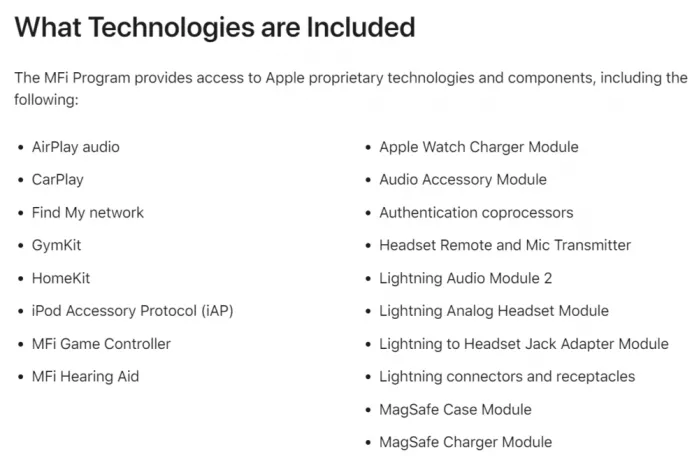
Some people may say that as a company with an annual revenue of more than 300billion US dollars, Apple will not be too entangled in the market of billions of US dollars.
But even if Apple disdains this part of the revenue, it must care about the control of the ecological chain. Different from the open source ecology of USB type-C, Apple has always adhered to the concept of closed ecology from the 30 pin dock interface of the first generation of iPhone to the lightning interface. If the type-C protocol is added, it means that any mobile phone manufacturer or third-party manufacturer can access Apple's port, which is probably intolerable by apple.
But the question is, even if the EU does not introduce a bill to regulate the charging interface, can Apple's lighting interface rest easy?
In the post lightning era, does Apple make cell phones without holes?
In addition to affecting the revenue of the MFI project, the charging interface standard pushed by the EU may also cause a series of correlation effects.
The key question is, will Apple continue to use the lightning interface in other regions? At present, there are risks in doing so.
First of all, the sizes of the lighting interface and the type-C interface are not the same. If Apple uses the two interfaces, it means that every single product released in the future will have to design two sets of different molds, which is unlikely for apple, which has always emphasized quality control.
Secondly, even in other countries and regions, the voice of unified charging interface is also rampant.
At the beginning of this year, dinglei, CEO of Netease, submitted a proposal on "unified charging interface" at the CPPCC National Committee meeting, and received a reply from the Ministry of industry and information technology, "vigorously promoting charging interface and technology integration is conducive to reducing e-waste and improving resource utilization efficiency. In the next step, the Ministry of industry and information technology will continue to promote the formulation of national standards, promote the integration and unification of charging interface and technology, and strive to promote the high-quality development of the consumer electronics industry."
Prior to this, several domestic mobile phone manufacturers have begun to discuss the general fast charging protocol to solve the problem of incompatibility of fast charging among manufacturers in the current market. Many manufacturers, including Huawei, Xiaomi, oppo and vivo, have also established the "Guangdong fast charging Industry Association". It can be predicted that the integration of charging interface and charging protocol in China will be the general trend in the future.
The premise to adapt to this trend is that mobile phone manufacturers must at least support the current type-C standard in the industry.
Even if we don't consider the changes in policies and market trends, just talking about the interface of lighting, it really can't meet the current development needs of smart phones, and even the needs of our own iPhones.
For example, on the iPhone 12 Pro generation, iPhone already supports 4K prores lossless video recording. However, in this format, a 10 minute short video will generate several GB of capacity. With the transmission speed of the lighting interface, it simply cannot meet the transmission requirements of large volume files in a short time.
The reason for this problem is that there is basically no expandable redundancy space in the design of Apple lightning interface.
The following figure shows the comparison between lighting interface and type-C interface:
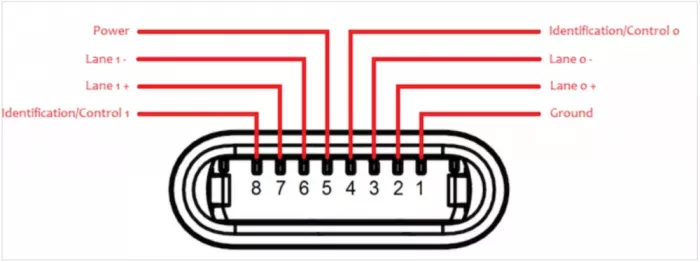
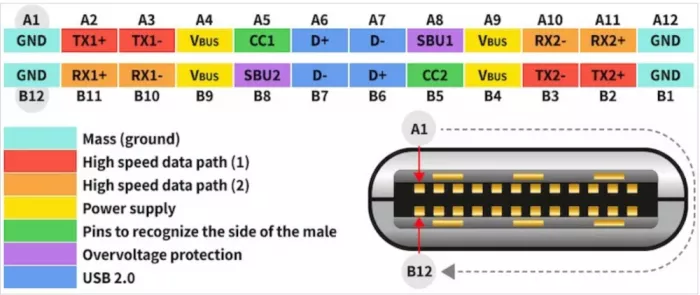
It can be seen from the comparison that only one 8-pin interface of lightning is used for current transmission, and the maximum current will not exceed 3.3a. The four data transmission lines can only achieve the transmission speed of 480mbps at most. These design defects can not be solved by later optimization.
Apple is certainly aware of this problem, but the company is not willing to fully commit to usb-if, a third-party agreement shared by more than 2000 enterprises.
Therefore, Apple hopes to bypass the type-C protocol commonly used in the industry and continue to maintain its control over the closed source ecology while eliminating the lightning interface. At present, it seems that apple is likely to achieve this path by creating a "cell phone without holes", that is, directly canceling the charging socket to realize the cell phone without holes.
This is not a wild guess. Apple was the first manufacturer to cancel the 3.5mm headphone hole, and also the first to join ESIM. If the former is a trade-off to launch airpods, I'm afraid that the first to join ESIM can only be explained by canceling the SIM card slot.
For apple, the benefits of this are obvious. The "hole free iPhone" will make all kinds of MagSafe wireless charging accessories just needed. At that time, apple can more openly sell accessories with the help of environmental protection topics.
However, considering the relatively weak transmission power of the current MagSafe series products and the privacy and security concerns of users, if Apple really implements the "non porous mobile phone", consumers will have a big question mark about whether it can be accepted.